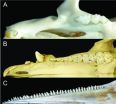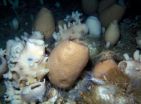(Press-News.org) This press release is available in French.
Montreal, February 18, 2013 – In a large city like Montreal, public transit provides us with options for getting to work or school and back home again. In deciding to choose traffic jams over metro delays, or to pay for parking rather than buy a monthly pass, you weigh the pros, cons and costs of your options, and your mental calculations are more complicated than they may appear at first glance.
In a paper recently published in The Journal of Transportation and Land Use, Zachary Patterson, an assistant professor in Concordia University's Department of Geography, Planning, and Environment, discovered that decisions about where to live and how to get from home to work happen simultaneously. What's more, your commuting choices depend not only on cost and travel time, but also on who you are and where you live.
With the help of colleagues at McGill University and Université Laval, Patterson crunched the numbers to determine which Montrealers are most likely to take public transit and which are more likely to drive. Previous studies have shown that people who live in neighbourhoods with a high population density and a mix of residential and commercial land use prefer public transit.
It's also clear that when the cost of parking increases, fewer people drive. But Patterson's study is the first to analyze how these factors interact with residential self-selection – the fact that individuals choose their neighbourhoods because they prefer one commuting option over another.
Patterson and his co-authors believe that "household location and transit mode choice are intimately linked," and the findings of their study support this hypothesis. A commuter living closer to downtown — in a part of the city with higher population density, a mix of residential and commercial land use, and good access to public transit — is 13 to 14% more likely to use public transit than someone living further away who is the same gender and age and has the same income.
Patterson's research proves that Montrealers under 35 are more likely to live where public transit is most accessible. What's more, the study also reveals that women are more than twice as likely to choose public transit than men.
The conclusions drawn from Patterson's study are readily applicable: when urban planners know more about who chooses public transit and why, they can make decisions that will encourage more people to leave their cars at home. The results suggest that increasing the cost of parking in downtown Montreal would appear to be one option, but decreasing public transit fares or travel times might work equally well. On a larger scale, says Patterson, "strategies that promote densification, increase land use mix, and improve transit accessibility would have a positive influence on downtown transit commuting."
###
Related links:
Concordia University's Department of Geography, Planning, and Environment http://gpe.concordia.ca/
The Journal of Transportation and Land Use https://www.jtlu.org/index.php/jtlu
Zachary Patterson's Research @ Concordia Profile http://www.concordia.ca/explore/#!/profile/2291/
Media contact:
Cléa Desjardins
Senior Advisor, External Communications
Concordia University
Tel: 514-848-2424, ext. 5068
Cell: 514-909-2999
e-mail: clea.desjardins@concordia.ca
Web: concordia.ca/media-relations
Twitter: twitter.com/CleaDesjardins END
It's off to work we go
Concordia professor studies transportation choices of Montreal commuters
2013-02-19
ELSE PRESS RELEASES FROM THIS DATE:
Solar sponge' soaks up CO₂ emissions
2013-02-19
CSIRO scientists have created a 'solar sponge' which captures and then releases carbon dioxide using the power of natural sunlight.
The breakthrough presents a new way to recycle CO2 emissions using renewable energy. The 'sponge' which is made from a new smart material called a MOF - metal organic framework - adsorbs carbon dioxide, but when exposed to sunlight, instantaneously releases it.
Known as dynamic photo-switching, this capture-and-release method is extremely energy efficient and only requires UV light to trigger the release of CO2 after it has been captured ...
New evidence for link between depression and heart disease
2013-02-19
MAYWOOD, Il. - A Loyola University Medical Center psychiatrist is proposing a new subspecialty to diagnose and treat patients who suffer both depression and heart disease. He's calling it "Psychocardiology."
In his most recent study, Angelos Halaris, MD, PhD, and colleagues found that an inflammatory biomarker, interleukin-6, was significantly higher in the blood of 48 patients diagnosed with major depression than it was in 20 healthy controls. Interleukin-6 has been associated with cardiovascular disease. Halaris presented findings at a joint congress of the World Psychiatric ...
In fight against cancer, a closer look at nuclear blebbing
2013-02-19
Misshapen cell nuclei are frequently observed in the cells of people with cancer and other diseases, but what causes the abnormality -- and why it is associated with certain disorders -- has remained unclear.
Researchers at Northwestern University have recently developed a mathematical model that sheds light on the defect by clarifying the mechanisms that cause bulges known as "blebs" in cells' nuclear membranes. The research -- a collaboration between experts at the McCormick School of Engineering and Applied Science and the Feinberg School of Medicine -- could be a ...
Nesting site protection 'key to save turtles from climate change'
2013-02-19
International marine scientists today warned it will be vital to protect key marine turtle nesting grounds and areas that may be suitable for turtle nesting in the future to ensure that the marine reptiles have a better chance of withstanding climate change.
A new study reveals that some turtle populations in the West Indian Ocean, Northeast Indian Ocean, North Pacific Ocean, East Atlantic Ocean and the East Pacific Ocean are among the least likely to recover from the impacts of climate change. Mariana_19feb_2
"To give marine turtles a better chance of coping with climate ...
5-ALA fluorescence guides resection of recurrent glioblastoma multiforme
2013-02-19
Charlottesville, VA, February 19, 2013. Neurosurgeons from UC San Francisco describe the use of 5-aminolevulinic acid (5-ALA) fluorescence in guiding resection of recurrent glioblastoma multiforme (GBM). Ingestion of 5-ALA by a patient before surgery leads to fluorescence of tumor cells intraoperatively in response to certain wavelengths of light. This can provide information not necessarily available through magnetic resonance imaging (MRI), the standard mode of imaging used to detect primary and recurrent GBMs. The additional information provided by 5-ALA fluorescence ...
How the whale got its teeth
2013-02-19
Whales are mammals, but they don't look like the mammals living around us, as they have a triangular fluke for tail, no hind legs and no body hair. And inside their mouths, their teeth are unfamiliar too – being much simpler and 'peg like'. A multidisciplinary team of researchers have now married together the fossil record and the embryonic development process to investigate how the whale got its teeth.
Most mammals have four kinds of teeth, each shaped for specific tasks. In most mammals there are wedge-shaped incisors, a pointy canine, and premolars and molars with ...
Stillbirth in Inuit and First Nations women higher than for non-Aboriginal residents
2013-02-19
Stillbirth rates in First Nations and Inuit populations in Quebec are higher than in the general population, especially in late gestation and at term, found a new study in CMAJ (Canadian Medical Association Journal).
"Aboriginal populations in Canada [First Nations and Inuit] rank at the top of the list of disadvantaged groups with the highest rates of stillbirth in the Western world," writes Dr. Nathalie Auger, Institut national de santé publique du Québec, with coauthors. Rates are 2 times those of the non-Aboriginal population.
Researchers looked at data on 9983 ...
Unplanned hospitalization more likely in people with several illnesses, mental health conditions
2013-02-19
People with multiple illnesses are much more likely to be admitted to hospital unexpectedly, and mental health issues and economic hardship further increase the likelihood, according to a study in CMAJ (Canadian Medical Association Journal).
"We provide strong evidence that physical multimorbidity substantially affects the use of acute hospital services, including admissions considered potentially preventable through management of optimal primary care," writes Dr. Rupert Payne, Cambridge Centre for Health Services Research, University of Cambridge, Cambridge, United Kingdom. ...
There's room for improvement in women's heart disease awareness
2013-02-19
The number of women aware that heart disease is the leading cause of death has nearly doubled in the last 15 years, but that knowledge still lags in minorities and younger women, according to a new study in the American Heart Association journal Circulation.
Researchers comparing women's views about heart disease in 1997 and today, found:
In 2012, 56 percent of women identified heart disease as the leading cause of death compared with 30 percent in 1997.
In 1997, women were more likely to cite cancer than heart disease as the leading killer (35 percent versus 30 ...
Data paper describes Antarctic biodiversity data gathered by 90 expeditions since 1956
2013-02-19
A new peer-reviewed data paper offers a comprehensive, open-access collection of georeferenced biological information about the Antarctic macrobenthic communities. The term macrobenthic refers to the visible-for-the-eye organisms that live near or on the sea bottom such as echinoderms, sponges, ascidians, crustaceans. The paper will help in coordinating biodiversity research and conservation activities on species living near the ocean bottom of the Antarctic.
The data paper "Antarctic macrobenthic communities: A compilation of circumpolar information", published in the ...
LAST 30 PRESS RELEASES:
Decoupling the HOR enhancement on PtRu: Dynamically matching interfacial water to reaction coordinates
Sulfur isn’t poisonous when it synergistically acts with phosphine in olefins hydroformylation
URI researchers uncover molecular mechanisms behind speciation in corals
Chitin based carbon aerogel offers a cleaner way to store thermal energy
Tracing hidden sources of nitrate pollution in rapidly changing rural urban landscapes
Viruses on plastic pollution may quietly accelerate the spread of antibiotic resistance
Three UH Rainbow Babies & Children’s faculty elected to prestigious American Pediatric Society
Tunnel resilience models unveiled to aid post-earthquake recovery
Satellite communication systems: the future of 5G/6G connectivity
Space computing power networks: a new frontier for satellite technologies
Experiments advance potential of protein that makes hydrogen sulfide as a therapeutic target for Alzheimer’s disease
Examining private equity’s role in fertility care
Current Molecular Pharmacology achieves a landmark: real-time CiteScore advances to 7.2
Skeletal muscle epigenetic clocks developed using postmortem tissue from an Asian population
Estimating unemployment rates with social media data
Climate policies can backfire by eroding “green” values, study finds
Too much screen time too soon? A*STAR study links infant screen exposure to brain changes and teen anxiety
Global psychiatry mourns Professor Dan Stein, visionary who transformed mental health science across Africa and beyond
KIST develops eco-friendly palladium recovery technology to safeguard resource security
Statins significantly reduce mortality risk for adults with diabetes, regardless of cardiovascular risk
Brain immune cells may drive more damage in females than males with Alzheimer’s
Evidence-based recommendations empower clinicians to manage epilepsy in pregnancy
Fungus turns bark beetles’ defenses against them
There are new antivirals being tested for herpesviruses. Scientists now know how they work
CDI scientist, colleagues author review of global burden of fungus Candida auris
How does stroke influence speech comprehension?
B cells transiently unlock their plasticity, risking lymphoma development
Advanced AI dodel predicts spoken language outcomes in deaf children after cochlear implants
Multimodal imaging-based cerebral blood flow prediction model development in simulated microgravity
Accelerated streaming subgraph matching framework is faster, more robust, and scalable
[Press-News.org] It's off to work we goConcordia professor studies transportation choices of Montreal commuters

